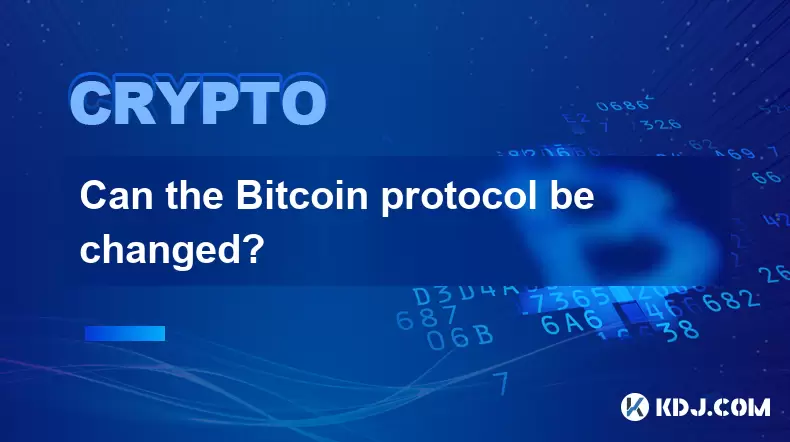-
 bitcoin
bitcoin $122288.232522 USD
0.16% -
 ethereum
ethereum $4480.662914 USD
-0.22% -
 xrp
xrp $2.962747 USD
-2.32% -
 tether
tether $1.000120 USD
-0.05% -
 bnb
bnb $1145.654223 USD
-2.07% -
 solana
solana $227.105217 USD
-1.67% -
 usd-coin
usd-coin $0.999548 USD
-0.02% -
 dogecoin
dogecoin $0.250875 USD
-2.04% -
 tron
tron $0.340654 USD
-0.49% -
 cardano
cardano $0.837968 USD
-2.52% -
 hyperliquid
hyperliquid $48.960449 USD
0.06% -
 chainlink
chainlink $22.049280 USD
-1.33% -
 ethena-usde
ethena-usde $1.000404 USD
0.02% -
 sui
sui $3.586212 USD
0.20% -
 avalanche
avalanche $29.894916 USD
-4.18%
How to use indicators to trade the opening range breakout for Bitcoin CME futures?
The Opening Range Breakout (ORB) strategy in Bitcoin CME futures involves trading breakouts from Monday’s early price range to capture momentum.
Jul 05, 2025 at 07:35 pm

What Is the Opening Range Breakout Strategy?
The opening range breakout (ORB) strategy is a popular trading technique used in both traditional markets and cryptocurrency futures, particularly for Bitcoin on the CME. This method involves identifying a specific price range formed during the early phase of a trading session and then taking positions when the price breaks above or below this range. The key idea behind ORB is that such breakouts often lead to sustained directional moves, making it a favored approach among intraday traders.
For Bitcoin CME futures, the opening range typically refers to the price action observed at the beginning of the week since futures contracts are traded five days a week with a weekend gap. Traders often focus on the Monday morning price movement as the market reopens after the weekend lull. The goal is to capture momentum once the price confirms a breakout from the established range.
Key Indicators Used in ORB Trading
To effectively trade the opening range breakout in Bitcoin CME futures, several technical indicators can enhance decision-making and improve entry and exit points. These include:
- Moving Averages: Using short-term moving averages like the 9-period or 20-period EMA helps confirm trend direction after a breakout.
- Volume Profile: Analyzing volume during the initial trading period helps determine the value area and potential support/resistance zones.
- Relative Strength Index (RSI): RSI levels help identify overbought or oversold conditions, which may signal false breakouts or continuation opportunities.
- Bollinger Bands: These bands provide dynamic support and resistance levels, especially useful in volatile environments like crypto futures.
Each of these indicators plays a unique role in confirming whether a breakout is genuine or likely to reverse. For instance, a breakout accompanied by rising volume and a strong candle close beyond the range increases the probability of a successful trade.
Setting Up the Chart for ORB Execution
Before entering any trade based on the opening range breakout, proper chart setup is essential. Begin by isolating the Monday session on the CME Bitcoin futures chart, preferably using the 1-hour or 4-hour timeframe. Identify the high and low prices during the first few candles after the market opens—typically the first 1 to 3 hours.
Mark these levels clearly on your chart using horizontal lines. Some traders use tools like the TrendSpider platform to automatically highlight the opening range. It's crucial to avoid arbitrary timeframes; instead, base the range on actual consolidation patterns seen in the early session.
Incorporate the previously mentioned indicators into your chart layout. Ensure that volume is visible beneath the price chart to monitor participation levels. If possible, overlay the previous week’s closing price to understand how the new session compares contextually.
Entry Criteria for Long and Short Positions
Once the opening range is identified and relevant indicators are plotted, the next step is to define precise entry triggers for long or short positions. Here’s how to structure entries:
- A long entry is triggered when the price closes above the upper boundary of the opening range with increased volume and positive momentum on RSI or MACD.
- A short entry occurs when the price drops below the lower boundary of the range, supported by bearish candlestick patterns and weakening momentum indicators.
Avoid entering immediately upon touching the range boundaries. Instead, wait for confirmation through candlestick closes outside the range. For example, if the opening range high is $65,000 and the price closes above this level on a 1-hour chart, consider entering a long position at the open of the next candle.
Traders should also look for confluence with other technical structures such as Fibonacci levels, prior swing highs/lows, or pivot points. This adds robustness to the trade setup and reduces the likelihood of false breakouts.
Managing Risk and Position Sizing
Risk management is critical when trading opening range breakouts in Bitcoin futures due to the inherent volatility of the asset. Begin by determining your maximum acceptable loss per trade—usually between 1% to 2% of your account balance.
Set a stop-loss order just below the opposite end of the breakout range. For a long trade, place the stop under the opening range low; for a short trade, set it just above the opening range high. Adjustments may be needed based on volatility readings from Bollinger Bands or Average True Range (ATR).
Position sizing should align with the distance between your entry and stop-loss levels. If the stop-loss is wide, reduce the number of contracts traded to maintain consistent risk exposure. Consider using trailing stops once the trade moves favorably to lock in profits while allowing room for normal price fluctuations.
Avoid over-leveraging, especially in futures trading where margin requirements and liquidation risks are significant. Always calculate your risk-reward ratio before entering a trade. A minimum 2:1 reward-to-risk ratio is generally recommended for sustainable trading.
Frequently Asked Questions (FAQs)
Q1: Can the ORB strategy be applied to other cryptocurrencies besides Bitcoin on CME?Yes, the ORB strategy can be adapted to other major cryptocurrencies traded on regulated futures exchanges. However, liquidity and volatility differences must be considered. Ethereum (ETH) futures on CME follow similar trading patterns and are suitable candidates for this strategy.
Q2: How do I adjust the ORB strategy for different timeframes?While the standard ORB focuses on the Monday session, shorter timeframes like 1-hour or 15-minute charts can be used to refine entries. Intraday ORB setups can occur at the start of each trading day, but require tighter stop-losses and quicker exits due to reduced holding periods.
Q3: Should I always wait for a candle close before entering a trade?It is strongly advised to wait for a confirmed candle close beyond the opening range to filter out false breakouts. Entering prematurely based on wicks or shadows can lead to unnecessary losses, especially in fast-moving markets like crypto futures.
Q4: How does news impact the effectiveness of ORB in Bitcoin futures?News events, especially those occurring over the weekend, can significantly influence Monday’s price action. Strong fundamental catalysts may override technical signals, leading to erratic movements. Traders should remain aware of macroeconomic announcements, regulatory updates, or major exchange developments before applying the ORB strategy blindly.
Disclaimer:info@kdj.com
The information provided is not trading advice. kdj.com does not assume any responsibility for any investments made based on the information provided in this article. Cryptocurrencies are highly volatile and it is highly recommended that you invest with caution after thorough research!
If you believe that the content used on this website infringes your copyright, please contact us immediately (info@kdj.com) and we will delete it promptly.
- BlockDAG, DOGE, HYPE Sponsorship: Crypto Trends Shaping 2025
- 2025-10-01 00:25:13
- Deutsche Börse and Circle: A StableCoin Adoption Powerhouse in Europe
- 2025-10-01 00:25:13
- BlockDAG's Presale Buzz: Is It the Crypto to Watch in October 2025?
- 2025-10-01 00:30:13
- Bitcoin, Crypto, and IQ: When Genius Meets Digital Gold?
- 2025-10-01 00:30:13
- Stablecoins, American Innovation, and Wallet Tokens: The Next Frontier
- 2025-10-01 00:35:12
- NBU, Coins, and Crypto in Ukraine: A New Yorker's Take
- 2025-10-01 00:45:14
Related knowledge

Why is Bitcoin considered a revolutionary technology?
Aug 12,2025 at 08:29pm
Decentralization and the Elimination of Central AuthoritiesThe core innovation behind Bitcoin lies in its decentralized architecture, which fundamenta...

Why is Bitcoin considered a revolutionary technology?
Aug 10,2025 at 07:42pm
Decentralized Architecture and Trustless TransactionsBitcoin is considered revolutionary because it introduced a decentralized architecture that opera...

What are the key features of Bitcoin?
Aug 10,2025 at 02:50am
Decentralization and Peer-to-Peer NetworkOne of the most defining characteristics of Bitcoin is its decentralized nature. Unlike traditional financial...

Can the Bitcoin protocol be changed?
Aug 07,2025 at 01:16pm
Understanding the Bitcoin ProtocolThe Bitcoin protocol is the foundational set of rules that govern how the Bitcoin network operates. It defines every...

Can the Bitcoin protocol be changed?
Aug 11,2025 at 01:01am
Understanding the Bitcoin Protocol StructureThe Bitcoin protocol is the foundational set of rules that govern how the Bitcoin network operates. These ...

What happens to Bitcoin transactions once they are confirmed?
Aug 09,2025 at 05:22am
Understanding Bitcoin Transaction ConfirmationWhen a Bitcoin transaction is initiated, it is broadcast to the network and placed in a pool of unconfir...

Why is Bitcoin considered a revolutionary technology?
Aug 12,2025 at 08:29pm
Decentralization and the Elimination of Central AuthoritiesThe core innovation behind Bitcoin lies in its decentralized architecture, which fundamenta...

Why is Bitcoin considered a revolutionary technology?
Aug 10,2025 at 07:42pm
Decentralized Architecture and Trustless TransactionsBitcoin is considered revolutionary because it introduced a decentralized architecture that opera...

What are the key features of Bitcoin?
Aug 10,2025 at 02:50am
Decentralization and Peer-to-Peer NetworkOne of the most defining characteristics of Bitcoin is its decentralized nature. Unlike traditional financial...

Can the Bitcoin protocol be changed?
Aug 07,2025 at 01:16pm
Understanding the Bitcoin ProtocolThe Bitcoin protocol is the foundational set of rules that govern how the Bitcoin network operates. It defines every...

Can the Bitcoin protocol be changed?
Aug 11,2025 at 01:01am
Understanding the Bitcoin Protocol StructureThe Bitcoin protocol is the foundational set of rules that govern how the Bitcoin network operates. These ...

What happens to Bitcoin transactions once they are confirmed?
Aug 09,2025 at 05:22am
Understanding Bitcoin Transaction ConfirmationWhen a Bitcoin transaction is initiated, it is broadcast to the network and placed in a pool of unconfir...
See all articles










































































